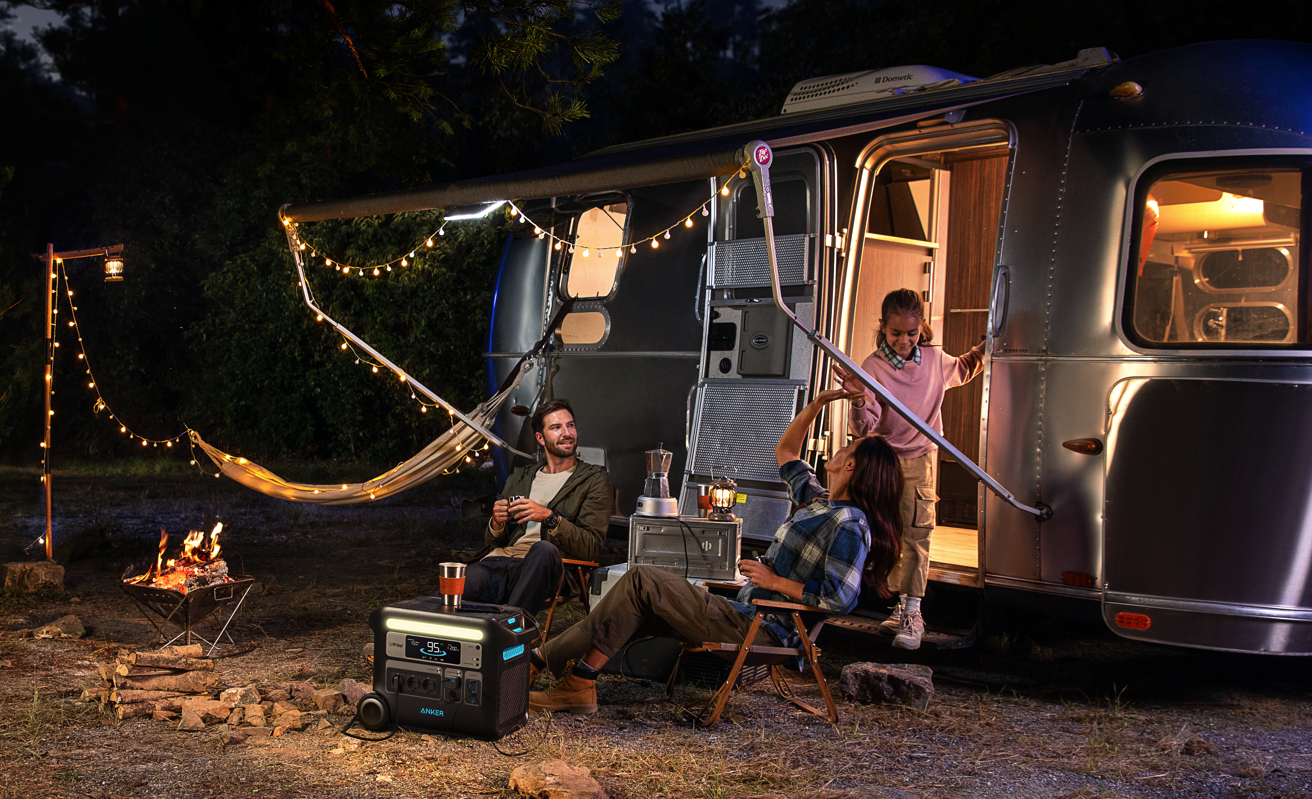- Article
- April 5, 2024
Portable power stations that can ensure power supply for both: your phone and your fridge – how to choose and what is important to know?

Do you want to have a source of electricity at the right place and time even where electricity is unavailable? With the quick development of technology even this wish is now possible with portable power stations that can help you from camping in nature, power outages at home to working remotely at places where is no power supply. Current portable power stations, depending on their capacity, can provide energy for small devices such as phones or computers, as well as for large home appliances such as microwaves or refrigerators.
So how to choose the right portable power station? Andrius Miltakis, Brand Development Manager at ACC Distribution, agreed to share his thoughts and comments on this topic.
“Until now, mobile charging devices have been better known as power banks which are designed to charge small mobile devices such as phones, headphones and etc. However, they could not meet the charging needs of larger devices so, in regard to this issue, portable power stations were developed. These devices partially replace the need for fossil fuel-powered including inverter electric generators. They are more mobile, easier to operate and can be used where sound is restricted or even in indoor spaces where the regular electric generators are simply not allowed for safety reasons. It is good news that the range of portable power stations is becoming more and more diverse, but it is important to know what to look for in order to choose the most suitable mobile power station,” says ACC Distribution specialist.
Andrius Miltakis, Brand Development Manager at ACC Distribution
According to A. Miltakis, when choosing a portable power station, the first thing to consider is a specific need and scenario of its usage as these devices can be a lifesaver in different life situations: outdoors activities, leisure and work, life on the road, home backup energy solutions or even helping for emergency needs.
In particular, these devices are especially relevant for city dwellers, as they are much more environmentally friendly and quieter than regular, fossil fuel-powered electric generators. In addition, their compact design ensures easier storage.
One of the main criteria for choosing a portable power station is its battery capacity (Wh) and power (W). These parameters are closely related to which devices are planned to be connected to a portable power station.
It is recommended to consider what low-power (like a laptop) or higher-power devices you want to connect and how many household devices you want to charge at once and for how long. This will help you to choose a model with the best power and capacity parameters.
It is important to consider that the instantaneous power, which is required when turning on a household appliance, in some cases can be up to several times higher than the nominal
power of the appliance, when it is constantly operating, so when thinking of the parameter of a power, keep a power reserve.
With a smaller portable power station of 300-500 watt-hours (Wh) and up to 500 W of power you can ensure energy for smaller devices such as computers, routers, mobile phones, a complete remote workstation or use for small household appliances in the event of a power outage or camping trip. Need to mention that the advantage of these portable power stations is that they are quite mobile and relatively cheap.
In the range of portable power stations there are also medium-sized models with capacities of 1000-1800 Wh and 1000-2000 W. Portable power stations with such parameters can provide enough energy to keep portable fridge running for up to 5-10 hours or a TV for 7-15 hours while a large fridge can be kept on for ~2 hours. Also, portable power stations with such capacity and power are perfectly suitable for fans, mini heaters and other common household appliances or even power tools for outdoor use (drills, saws), etc.
When thinking about the needs of home backup energy, homestead, or a camper, it is worth to choose larger capacities: from 2000 – 4000 Wh (or more) and more than 2000 – 6000 W power mobile power stations as they can support not only small household appliances and electronics, but also large household devices. Portable power stations of such parameters will allow you to ensure power for a fridge and a washing machine at the same time and will be perfectly suitable for professional work tools, higher power microwave ovens, kettles, electric grills. A 6000 W portable power station will even support lower power home air conditioners (for a limited time) in the event of a power failure on a hot summer day.
Another important component of a mobile charging station is its battery, as the durability and safety of the device can depend on the battery type. For example, LiFePO4 compound batteries integrated in portable power stations can provide up to 3000 charging cycles without losing battery efficiency. Manufacturers claim that such batteries can last up to 10 years of everyday usage. Meanwhile, lithium batteries (NMC) can provide up to 500 charge cycles. Although the NMC batteries are not as durable as LiFePO4 batteries, usually they are more mobile and lighter.
Price also remains an important criterion when choosing a portable power station. The price of these devices depends on various factors: the manufacturer, the innovativeness of the product and its technology, the charging speed, or other features such as control via an app and etc. However, the price of a portable power station is mostly determined by its capacity and power. For example: a 300-500 Wh portable power station can cost on average between €230 and €380, 1000-1800 Wh – between €700 and €1,350 and 2000-4000 Wh – between €1,500 and €3,500.
A. Miltakis asked how long it takes to charge such mobile power stations, explained that some models have a fast-charging function that allows to recharge to 80% of the battery level in just 1 hour while regular batteries take around 5 hours or more to fully charge. The charging time also depends on how the portable charging station is charged – whether from the regular mains or using green energy sources. This type of mobile power station can be connected to portable solar panels or can be recharged directly from the traditional home electricity grid or even a home solar power system. Most mobile charging stations are equipped with connections to various sources of electricity generation.
In Lithuania the most popular brands of portable power stations currently are Anker, EcoFlow and Jackery.

